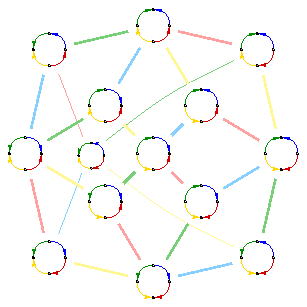Seminar
Ausgewählte Kapitel der Graphentheorie:
Flips and Flip-Graphs
Sommersemester 2022
Prof. Stefan Felsner
Sprechstunde n.V.
LV-Nr.: 3236 L 316

Seminar Ausgewählte Kapitel der Graphentheorie: Flips and Flip-Graphs Sommersemester 2022 Prof. Stefan Felsner Sprechstunde n.V. LV-Nr.: 3236 L 316 |

|